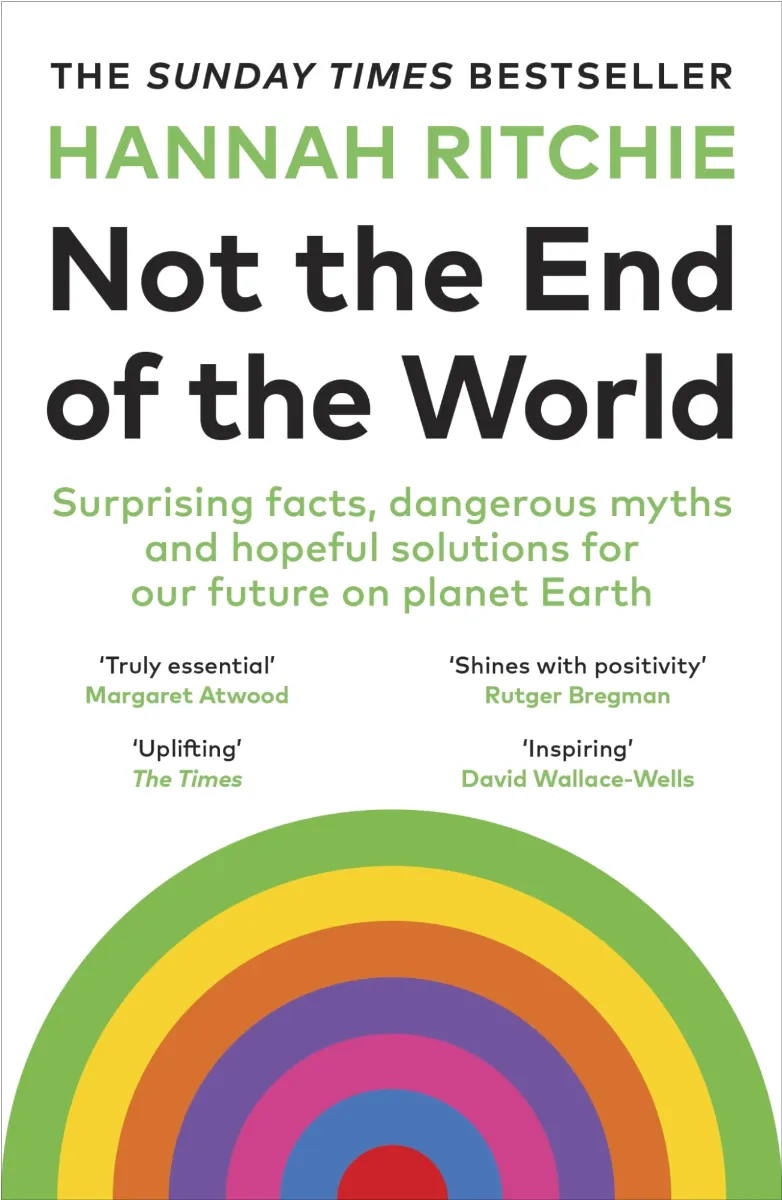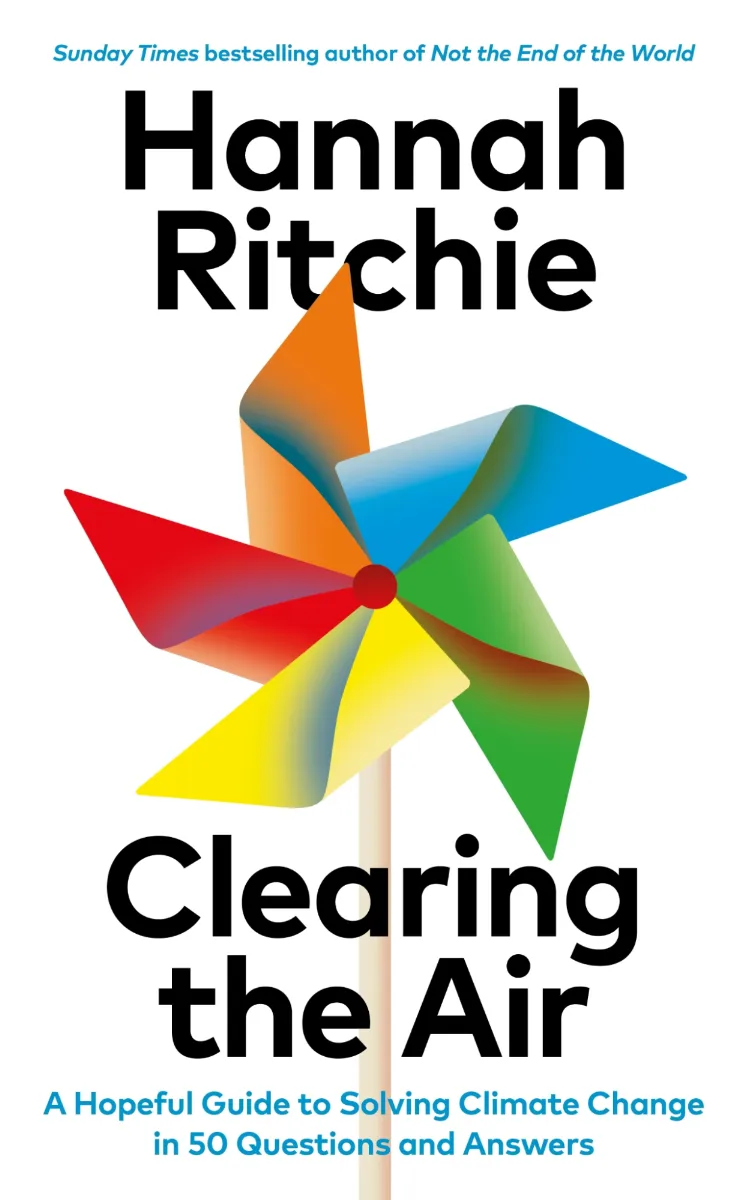Clearing the Air “Not the end of the world”
Patrick Medlicott - 29th September 2025
I was intending to do further blogs on esoteric climate related subjects such as the recent articles from the Guardian on the Atlantic Meridional Overturning Circulation (AMOC) changes that may be responsible for very significant alterations in the climate over the next century. Ocean currents are very much in the climate change news, and are certainly altering - likely due to the climate crisis - and have altered in the past, contributing to ice ages in the North and warming in the Southern hemisphere, documented from ice cores and other evidence.
Your readers however will be pleased to not have to go there. Instead, I will talk about two recently published books from 2024 and 2025. These are entitled “Not the end of the world”, published 2024 and “Clearing the Air” published last month.


These two books are authored by a very intelligent and articulate young person (age 32) named Hannah Ritchie. Dr Hannah Ritchie is a Scottish data scientist and senior researcher at the University of Oxford, and deputy editor of” Our world in Data”. She is Scottish and was educated in Edinburgh, and began her education in ecological studies and, of course, the impact of climate change. In her first book, which I read last year, she pointed out with the use of proper data that climate change was not the end of the world as we know it, but a warning and an opportunity to change course before severe and irreversible changes were likely. She made the point clearly that she did believe there was a significant and severe problem with climate change, and that this was significantly man-made. Unfortunately, some of the reviews that I read suggested that it was not really a problem, whereas that is not what she was saying. Her message was that it was real, but there was time, with the right solutions and the application of the right data, that humankind would be able to make the changes necessary for its impact to be lessened. However, nowhere did she say that the problem was not caused by excessive atmospheric CO2, or that to make the necessary changes did not require decarbonisation as rapidly as possible, or that stopping the burning of fossil fuels was not required.
I have just finished her recent book on clearing the air. The format is based on 50 questions that people have asked about dealing with decarbonisation, and the answers are based on sound data. I believe this is an excellent way to present the problems and their solutions. In the introduction she states that reading about climate change was like having a daily dose of Whiplash. ”We are damned if we do switch to clean energy and certainly damned if we don’t”. This leads many people to simply ignore the facts, or to go down the rabbit hole of complete denial of the facts, or become despondent because there is nothing that we can do to prevent the coming climate apocalypse. Her introduction makes the point that we could have a world run on clean energy, we could build cities out of green cement and low carbon steel, have comfortable homes and have no one living in energy poverty. We could feed 10 billion people on a fraction of the land we use today, and without killing tens of billions of animals each year. She recognises it is a massive but solvable problem. She calls it 50 burning questions and 50 straightforward answers. I have watched her presentations on YouTube, and they are excellent and based on real world contemporary data. A point she makes is that the data keeps improving, and anything that is more than a few years old may well be of little use. She cuts through noise with the best data, used in the right context. One of her statements is “Don’t let perfect be the enemy of good”. There is not enough time to be 100% certain before we act. Another very useful statement I found from her is from the physicist David Deutsch in his three laws of the human condition:
-
Problems are inevitable.
-
Problems are solvable.
-
Solutions create new problems, which must be solved in their turn.
Another very good point from the book is that systemic change is reinforced by individual changes: it’s not one or the other. We need to act in our personal lives and behaviours and change society to act globally. The topics that are considered are:
- Part One: The Big Questions
- Part Two: Fossil fuels
- Part Three: Renewable energy
- Part Four: Nuclear power
- Part Five: Electric cars
- Part Six Minerals
- Part Seven: heating and cooling
- Part Eight: Food
- Part Nine: cement, steel and other hard to abate industries
- Part Ten: Carbon Removal and storage and planetary Geoengineering.
One of the good and relevant questions to New Zealand is “we don’t need to do anything because we only contribute 1.4% of global warming”. This is answered in detail.
Another example:
Question: Isn’t it too late? Aren’t we heading for a 5 or 6°C warmer world?
Answer: Every 10th of a degree matters. There is no point at which it is too late to limit warming and reduce damage from climate change.
She then goes into examples, details and data supporting each of the 50 questions, and what we as individuals need to do as well as what society, politics and government needs to do.
She ends each question with a section on things to “bear in mind” for the readers.
At this time, I believe this is the best exposition of climate science available, and it answers virtually all of the questions likely to be asked by a tipsy elderly denier at the dinner table.
Both books I have read on Kindle, and I believe members of Skeptics society should consider having a look at them, especially as New Zealand is having problems deciding on whether to continue business as usual or whether to decarbonise fully. There are certainly some areas where it is extremely difficult, such as aviation and shipping, however the major areas are relatively easily solvable with political will and public action. The other areas will come with time and further developments. Unfortunately, carbon capture and storage at this time are unlikely to be able to be scaled to be of significant use, but certainly could mop up some emissions after simple solutions are exhausted. I hope these books will enable us to get off our track back in the last century and move us into the 21st-century - not for us personally, but for our grandchildren and their children.